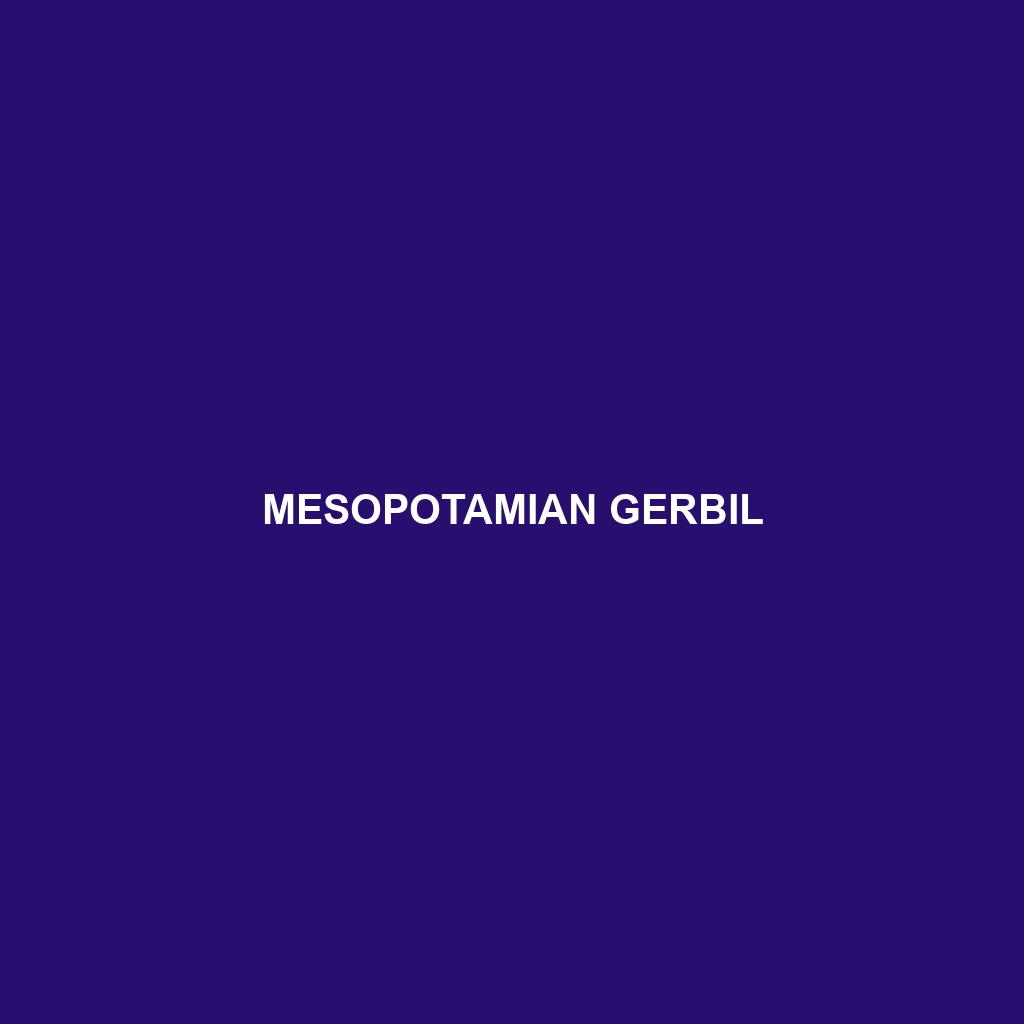Mesopotamian Gerbil: A Detailed Species Description
Common Name: Mesopotamian Gerbil
Scientific Name: Gerbillus pyramidum
Habitat
The Mesopotamian Gerbil is primarily found in the arid regions of the Middle East, particularly in Iraq, Syria, and parts of Iran. This species thrives in desert environments, preferring sandy soils and sparse vegetation. The habitat is characterized by hot temperatures, minimal rainfall, and a landscape predominantly consisting of dunes and shrubby areas.
Physical Characteristics
The Mesopotamian Gerbil measures approximately 10 to 15 cm in length, excluding its long, tufted tail, which can add another 8 to 12 cm. Its fur is typically a light brown to sandy color, providing excellent camouflage against the desert sands. The species features large, round ears and prominent eyes, which enhance its sensory perception in low-light conditions. Strong, clawed feet allow for adept digging and climbing in its natural environment.
Behavior
This gerbil is predominantly nocturnal, exhibiting most of its activities during the cooler nights. Mesopotamian Gerbils are known for their social behavior, living in small family groups or colonies. They communicate with a variety of vocalizations and engage in playful interactions. Burrowing is a major aspect of their behavior, as they create extensive underground tunnels for shelter and safety from predators.
Diet
The diet of the Mesopotamian Gerbil consists mainly of seeds, grains, and various plant materials. They are known to forage actively at night, searching for food sources within their arid habitat. Occasionally, they may consume insects and small invertebrates, especially during times when plant resources are scarce. This species has adapted its feeding habits to effectively utilize the limited resources available in its environment.
Reproduction
Mesopotamian Gerbils typically breed during the warmer months, with a peak in activity occurring in late spring to early summer. After a gestation period of about 24-26 days, females give birth to litters of 3 to 7 pups. The young gerbils are born blind and hairless, relying on their mother for nutrition and protection in the early stages of development. Weaning occurs at approximately three weeks of age, and young gerbils begin to explore and forage soon thereafter.
Conservation Status
The conservation status of the Mesopotamian Gerbil is currently classified as Least Concern, with stable populations recorded across its range. However, habitat loss due to urban development and agricultural expansion poses potential threats. Monitoring these populations is essential to prevent future declines.
Interesting Facts
One fascinating feature of the Mesopotamian Gerbil is its ability to survive in extremely dry conditions, minimizing water loss through efficient kidney function. They can survive on dietary moisture from seeds and may not need to drink water regularly. A notable characteristic is their communal burrowing behavior, which creates a network of tunnels used for shelter and resource sharing among family groups.
Role in Ecosystem
Mesopotamian Gerbils play a vital role in their ecosystem as both seed dispersers and prey for various predators such as foxes, hawks, and snakes. Their digging activities contribute to soil aeration and nutrient cycling, promoting plant growth in their habitat. By influencing vegetation dynamics, they indirectly support the broader desert ecosystem.
